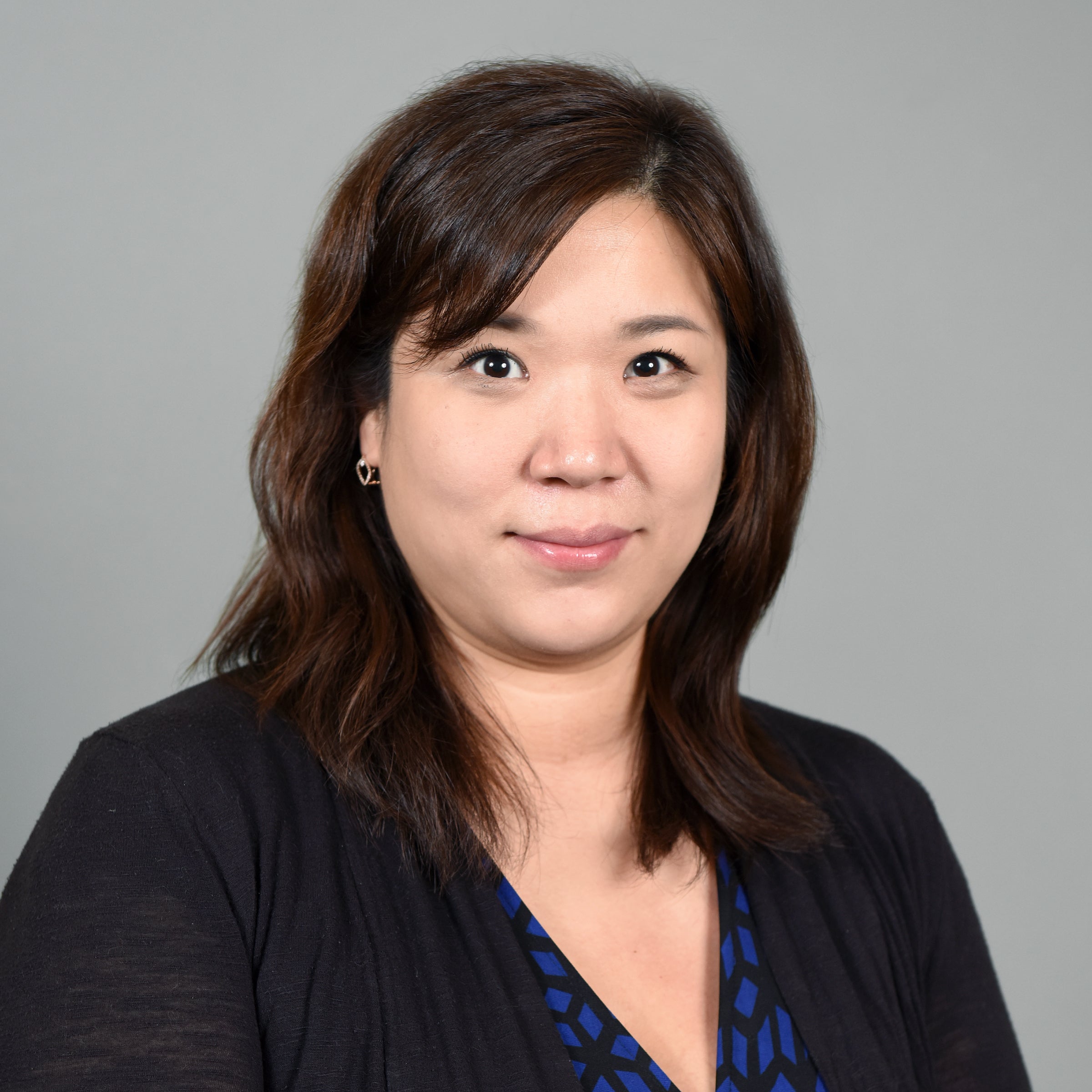Crisis has a way of bringing out the best and worst in people.
While plenty of stories of sacrifice and goodwill surrounding COVID-19 have surfaced since the global pandemic began, two Arizona State University professors are shedding light on the darker side of this troubling time.
Aggie J. Yellow Horse and Karen J. Leong, both professors in ASU’s School of Social Transformation, claim that COVID-19 has caused anti-immigration and anti-Asian backlash throughout the country, and that Asian Americans are being scapegoated by the public and national leaders — sometimes resulting in physical attacks, bullying and wide-ranging acts of discrimination.
ASU Now spoke to Yellow Horse and Leong about their findings and their article, “Xenophobia, Anti-Asian Racism and COVID-19,” which was recently published by the Praxis Center, an online blog and website dedicated to teaching and social justice activism.
Aggie J. Yellow Horse
Question: During a crisis, it seems as if enlightenment and "wokeness" goes out the window. What do you think is happening in regard to xenophobia, violence, harassment and acts of discrimination against Chinese Americans and other Asian Americans right now?
Leong: In general I believe that no contemporary society nor individual is fully enlightened when it comes to racism, especially when we are referring to structural racism — by which I mean how our society has been built upon disadvantaging certain groups based on race and/or nationality, advantaging other groups, and then ignoring the existence of some groups altogether — like American Indians who are their own nations. So we shouldn’t be surprised that when faced with crises we do familiar things, like excluding and scapegoating.
As a nation, the United States defined Americans as early as the Naturalization Act of 1790 through the process of exclusion. Since then, our immigration and naturalization laws have identified people who don’t belong based on race, gender, class, able-bodiedness, mental health and sexuality. All of these criteria have been used to exclude people from full inclusion in our national community. Benedict Anderson described how societies define who does and does not belong, and who or who does not deserve protections, as a process of “imagining community." Sociologists call this fear of foreign threats to social well-being a “moral panic,” while historian John Higham described political and violent reactions against immigrants and perceived foreigners in history “nativism,” or an attempt to protect the interests of presumed “native peoples” from external threats.
When political leaders insisted on and persisted in naming COVID-19 as “a Chinese virus,” they attached that virus to Chinese (people), Chinese Americans and Asian Americans, who then may be suspected as carriers of this virus.
Q: Your paper contends that by continually calling this the "Wuhan virus" or "Chinese virus" incites the problem. Why do you feel that way and how do you suggest we address this?
Yellow Horse: The familiar justification for using the terms like "Wuhan virus" or "Chinese virus" is that it is common to add geographic markers to a public health outbreak, such as “Spanish flu” and “Ebola” — Ebola is the name of river in Democratic Republic of the Congo. Throughout U.S. history, many Americans have shown that it is hard to distinguish geographic markers from those of nation or race. Asian Americans’ heritage has been confused with national affiliation and loyalty. For example, Japanese Americans were suspected to be loyal to Japan during World War II based on their Japanese heritage. Many Asian Americans are perceived to be linked with COVID-19 based on their appearance and have been the target of racial discrimination, harassment and hate crimes since the pandemic began. Using these terms is scientifically incorrect — COVID-19 does not originate from certain racial and national origins — and can cause serious stigma. Interestingly, the H1N1 pandemic not only doesn’t identify North America as its origin, pigs were blamed for it: “the swine flu." So, the easiest way to address the problems of scapegoating is to simply stop using the incorrect term, and refer to the disease as COVID-19 as recommended by the World Health Organization.
There are other reasons we need to call the virus by its name. Thinking of COVID-19 as a “foreign virus” or “Chinese virus” may have contributed to lack of appropriate timely preparation and response in the U.S. since January because the pandemic was viewed as the “Asian problem” or a foreign problem.
Q: How do you define xenophobia, and what should it look like to all of us?
Yellow Horse: Xenophobia is the fear of the other. It contributes to the dislike or unfavorable preconceived ideas or prejudice against people from other countries, and it can appear in multiple ways. It shows up in public policy and political statements like travel bans, school policies and political statements; in media representations like fear of masks; in reactions to individuals like harassment in public places including avoidance, child bullying and racial slurs; and in targeting certain communities, such as avoiding Chinese/Asian businesses.
Q: Your paper points out that there is a history of xenophobia in this country against Asians, and that the U.S. has a habit of using “others” as scapegoats by associating diseases with foreigners. Please give some examples.
Leong: We’ve seen this throughout U.S. and world history. There are quite few examples. Jewish people were blamed for the bubonic plague and Great Depression; Irish immigrants were accused of undermining American individualism, resulting in anti-Irish violence and nativism; Mexican and Latinx immigrants have been blamed for increased crime rates during times of recession.
After Chinese immigrant workers were no longer in demand for their labor in the late 19th century, and the United States entered into a recession, the vast unemployment among white Americans and European immigrants resulted in anti-Chinese violence throughout the western United States. Chinese women were the first to be denied entry based on nationality with the Page Law of 1875, despite the fact that most were trying to unite with their family. The popular perception was that Chinese women immigrants were prostitutes and thus were spreading sexually transmitted diseases to young white American males. Several West Coast publications cited Chinatowns as places that would infect U.S. society with opium addiction and Chinese laundries were accused of unsanitary practices. These rumors and the lack of Chinese families were cited as evidence that Chinese were too immoral to be true Americans, which resulted in the passage of the Chinese Exclusion Act in 1882.
Historian Natalia Molina has shown how Mexican, Chinese and Japanese immigrants became targets of public health authorities in Los Angeles in the 1920s, and how their working class and race together resulted in less access to running water and waste disposal, which only further stigmatized these communities as unhygienic. These assumptions informed public health practice. The Great Depression resulted in full scapegoating by Los Angeles authorities of Mexican Americans as overtaxing public resources and threatening public health.
Q: The article states that the lack of federal response in condemning xenophobia by public officials has you worried. What would you like to see happen?
Leong: As with any institution, leadership from the top sets the example for others to follow. Community efforts on the ground and statements by some journalists, media figures and scholars are significant and make a difference but are not being heard by some Americans who continue to associate COVID-19 with China and Asian Americans. At this point it would be valuable for the White House and other officials to continually and consistently remind Americans that Chinese American, Asian American, and Chinese people are not spreading COVID-19 any more than any other ethnic, racial or national group. Governors need to reiterate this message statewide, as do mayors. We should remember in fact there are courageous Chinese doctors and journalists who were punished for trying to get the truth out about the virus.
Karen J. Leong
History has shown us that speaking out at all levels, but especially from positions of leadership and authority, and following this up with protection and actions affirming inclusion and belonging can make a big difference. That is why when our colleague in the School of Social Transformation, Professor H.L.T. Quan, invited us to submit an article to the Praxis Center blog that she curates for the ARCUS center at Kalamazoo College, we were happy to contribute. She is extending that platform to broaden our understanding about the different ways the pandemic is affecting diverse people and communities.
Q: How is this issue relevant for our ASU community and what can we do to work toward social cohesion?
Yellow Horse: I taught a course on Asian American Immigrant Health (APA 360) during Session A as the current pandemic was progressing since January. In early February I added some reading materials as “food for thought” relating the current coronavirus event to how Asian Americans have been historically racialized through the Yellow Peril stereotypes. At the time, the current event was not declared as a pandemic by the World Health Organization, and racist and xenophobic incidents were just beginning to rise nationwide. In our virtual classroom discussion the following week, many of my students who are Asians and Asian Americans shared their personal experiences of being targeted for harassment and discrimination where “non-Asian individuals would point and laugh at me as I am making my way to class” and their parents warning them not to wear the mask in public so they would not become targeted. My other students also expressed witnessing others making “jokes about people of Asian descent having a virus”. One student shared, “(a)lthough I am not an Asian American, I've found these reports rather aggravating because they are very distasteful and hurtful.” I was impressed and grateful to see that students really took the initiative to engage in respectful and supportive discussion on how they can support each other, and not be the bystanders when witnessing harassment and discrimination against their fellow students.
I think my students were exemplary and inspiring as they acknowledge the need for social cohesion during this challenging time and start the conversations about what actions they can take towards building social cohesion. We are actually seeing how individuals and communities are working together at this time: During the pandemic, individuals and communities have come together to organize to ensure that elderly persons have safe access to basic needs and schoolchildren have access to healthy food during school closures. I strongly urge that it is important to remember that Asian Americans and other groups facing greater stigmatization due to xenophobia and racism may feel vulnerable and need support.
People around bustling Dixon St in Haymarket in Sydney, Australia at night. Photo by iStock/Getty Images
More Arts, humanities and education

Grand Canyon National Park superintendent visits ASU, shares about efforts to welcome Indigenous voices back into the park
There are 11 tribes who have historic connections to the land and resources in the Grand Canyon National Park. Sadly, when the park was created, many were forced from those lands, sometimes at…
ASU film professor part of 'Cyberpunk' exhibit at Academy Museum in LA
Arizona State University filmmaker Alex Rivera sees cyberpunk as a perfect vehicle to represent the Latino experience.Cyberpunk is a subgenre of science fiction that explores the intersection of…

Honoring innovative practices, impact in the field of American Indian studies
American Indian Studies at Arizona State University will host a panel event to celebrate the release of “From the Skin,” a collection over three years in the making centering stories, theories and…


